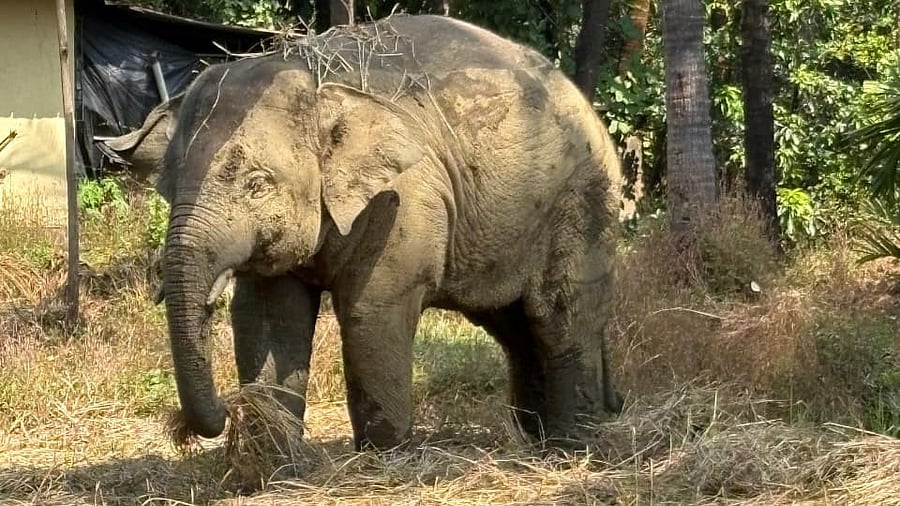
Wild Elephant 'Omkar'
Picture credit: Siddharth Nadkarni
The Maharashtra Forest Department’s plan to capture and temporarily translocate wild elephant Omkar to Gujarat, owing to the State’s lack of a dedicated wildlife rehabilitation facility, has sparked renewed concern among conservationists and communities along the Konkan belt.
The situation, compounded by the recent killing of a leopard in Pune district, has now escalated to the highest level, with NatConnect Foundation submitting a fresh, urgent plea to the Prime Minister, who is himself known for his deep interest in wildlife and ecological conservation. The organisation urged the Centre to intervene before short-term, reactive measures become the norm in managing India’s growing human–wildlife conflict.
Elephant 'Omkar'.
Picture credit: Siddharth Nadkarni
The appeal comes at a time when the Bombay High Court’s Kolhapur Bench has permitted the State to proceed with Omkar’s temporary translocation to the Vantara Elephant Treatment and Rehabilitation Centre in Gujarat. The Division Bench of Justices M.S. Karnik and Ajit B. Kadethankar relied on expert assessments, accepted the Forest Department’s position on the need for temporary holding, and recorded the State’s assurance that Omkar would be brought back to Maharashtra once its own facility is ready.
In the same proceedings, the Court also recorded the concerns of Ratnagiri-based petitioner Rohit Prakash Kamble, who argued that Omkar is a free-ranging wild elephant who should remain within natural forest systems. He expressed apprehensions about shifting the animal to a private enclosure far from its familiar habitat and contended that authorities must prioritise in-State alternatives such as Radhanagari, Chandoli or Tillari.
“Omkar translocation plan and the leopard killing are not isolated events — they are symptoms of a broken system,” said B N Kumar, Director of NatConnect Foundation.
“We cannot keep reacting with force and fear. India urgently needs a scientific, corridor-based wildlife policy that protects people by protecting habitats. Captures and killings only treat the symptoms. The real disease is habitat disruption,” Kumar pointed out.
Omkar, believed to have wandered into Maharashtra from Karnataka while likely searching for a female companion, has become entangled in administrative constraints and fragmented landscapes, said Mandar Gawde, a Kudal-based wildlife lover. With Maharashtra still years away from establishing a rehabilitation facility and neighbouring States declining to host him, officials considered translocation unavoidable.
Sawantwadi villagers have, however, mounted a strong campaign insisting that Omkar should be guided back toward the Maharashtra–Karnataka elephant corridor rather than removed entirely from the terrain he understands. “This sporadic behaviour stems from herd separation and habitat disruption, not aggression,” said Gawde.
The leopard killing in Pune adds another layer to the crisis. Declared a “man-eater” and shot dead in a rushed operation, the animal’s death, environmentalists say, reflects a larger pattern where shrinking forest spaces, unmanaged garbage and unregulated expansion push wildlife into human settlements — and trigger panic-driven responses that fail to address root causes.
Nandakumar Pawar, head of Shri Ekvira Aai Pratishtan, said the growing conflict is a direct result of human intrusion into ecological spaces. “If we want to stop animal–human conflict, we must stop disturbing their habitats. Protecting ecological balance is the only long-term solution. Wildlife enters our spaces because we have gone too far into theirs,” he said.
NatConnect’s appeal urges coordinated habitat restoration, protection of wildlife corridors, better land-use regulation at forest edges, improved waste management and professionally trained rapid-response teams to manage encounters safely. Unless the landscape is repaired, the organisation warns, conflicts will escalate and both wildlife and people will continue to suffer avoidable losses.